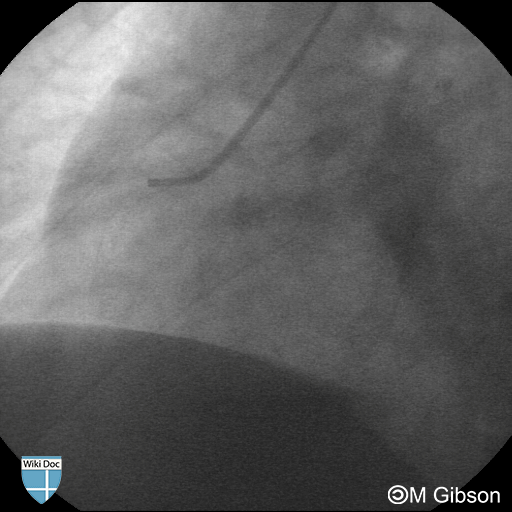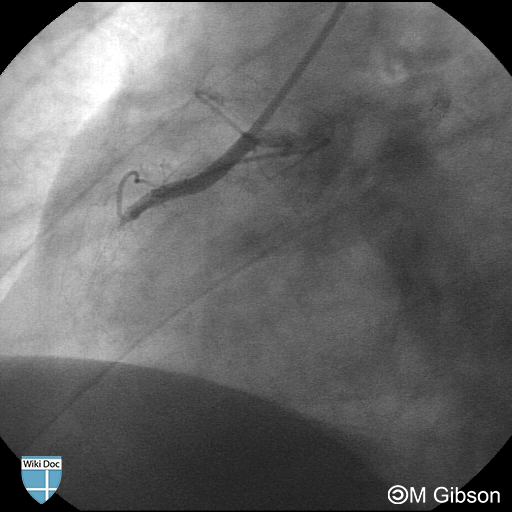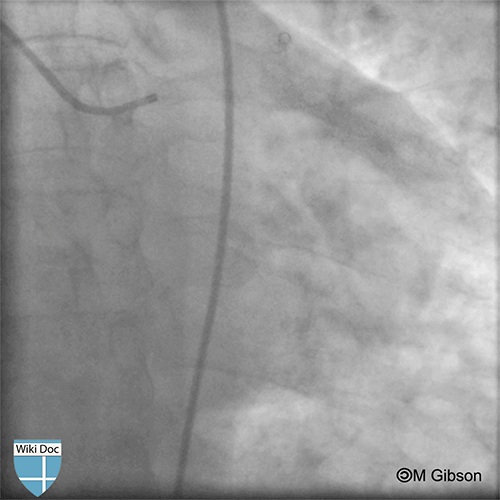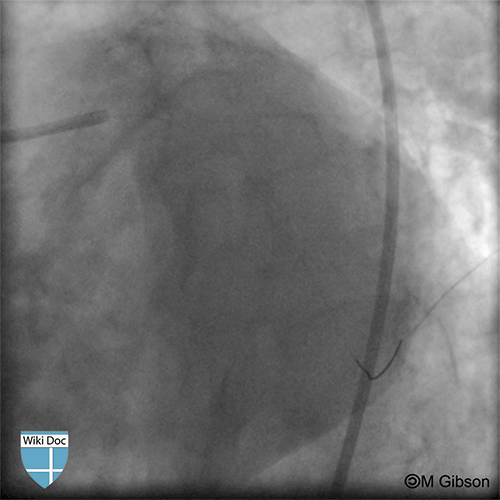Inferior myocardial infarction
| Resident Survival Guide |
|
ST Elevation Myocardial Infarction Microchapters |
|
Differentiating ST elevation myocardial infarction from other Diseases |
|
Diagnosis |
|
Treatment |
|
|
Case Studies |
|
Inferior myocardial infarction On the Web |
|
Directions to Hospitals Treating ST elevation myocardial infarction |
|
Risk calculators and risk factors for Inferior myocardial infarction |
For patient information click here
Editor-In-Chief: C. Michael Gibson, M.S., M.D. [1]
Synonyms and keywords: Inferior MI
Overview
An inferior myocardial infarction (MI) is a heart attack or cessation of blood flow to the heart muscle that involves the inferior side of the heart. Inferior MI results from the total occlusion of either the right coronary artery in 85% of the cases or the left circumflex in 15% of the cases. Inferior MI is characterized by ST elevation on electrocardiogram (EKG) in leads II, III and aVF.
EKG Examples
Shown below is an EKG demonstrating ST elevation in the precordial and limb leads depicting acute inferior MI.
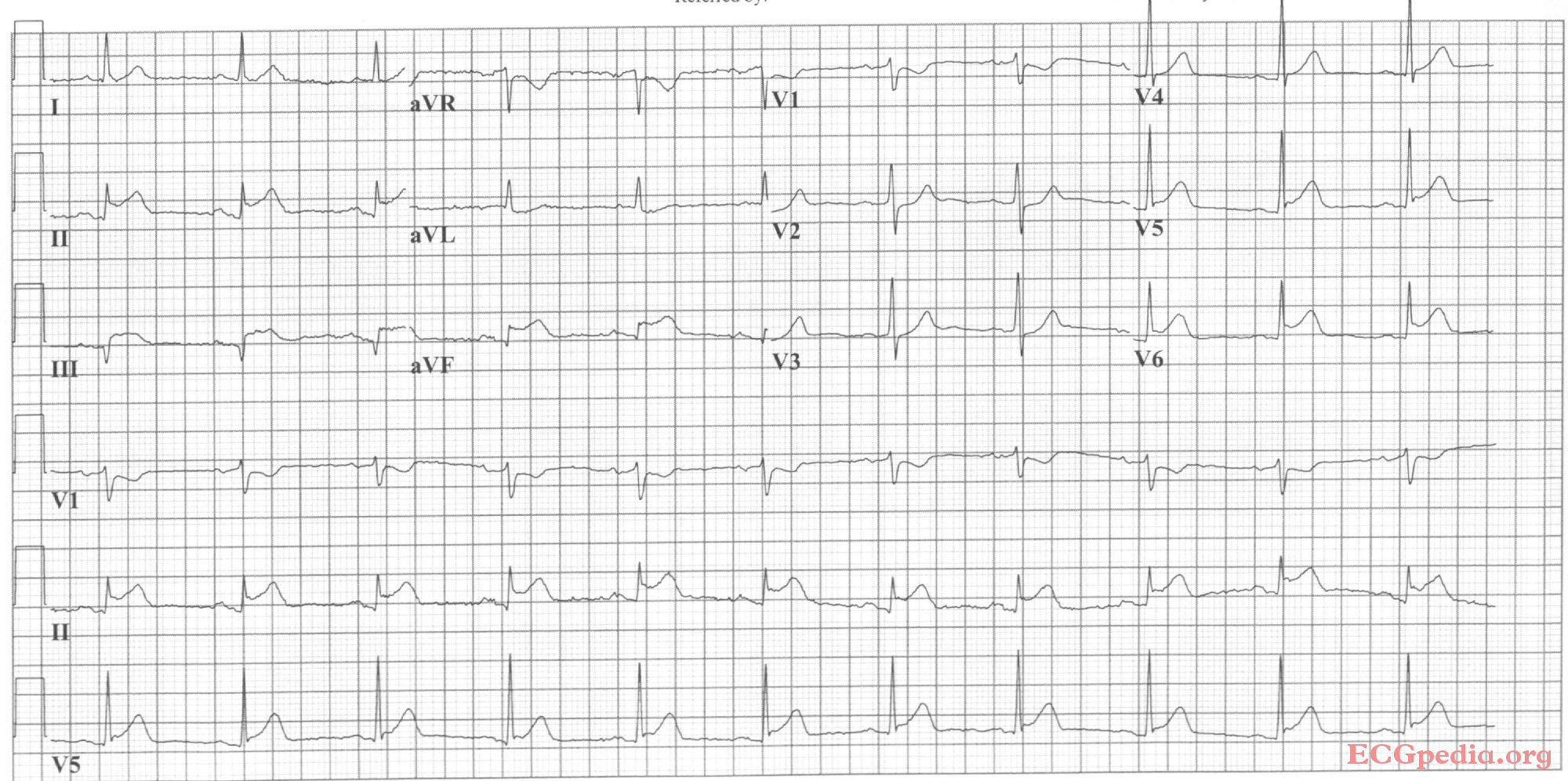
Copyleft image obtained courtesy of, http://en.ecgpedia.org/wiki/Main_Page
Shown below is an EKG with ST elevation in II, III, aVF (in III > II), ST depression in I, aVL, V2. Tall R in V2, otherwise normal QRS morphology. The findings are suggestive of acute posteroinferior MI.
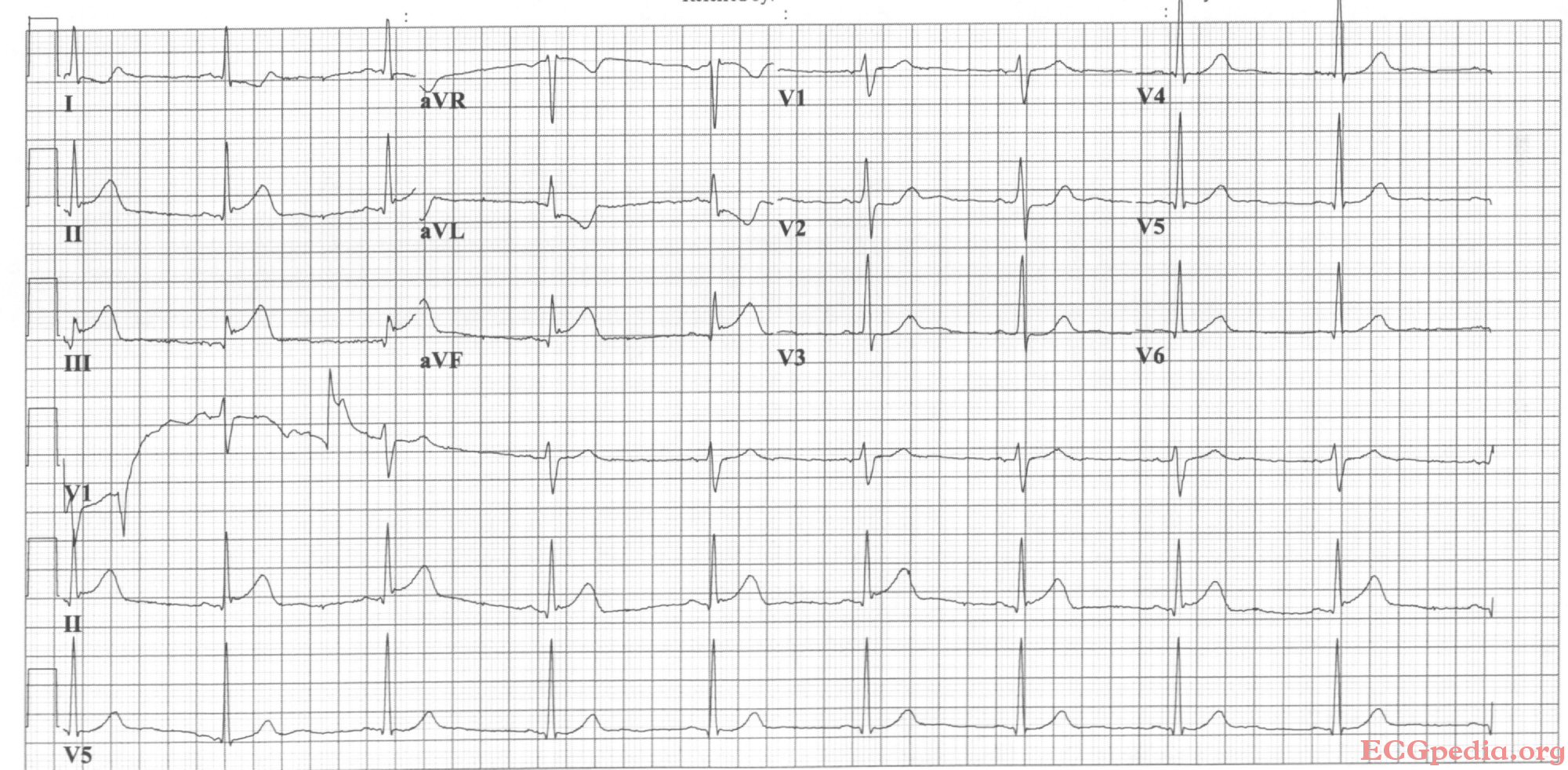
Copyleft image obtained courtesy of, http://en.ecgpedia.org/wiki/Main_Page
Shown below is an EKG demonstrating changes during acute inferior MI depicting ST elevation in leads II, III and aVF.

Copyleft image obtained courtesy of, http://en.ecgpedia.org/wiki/Main_Page
Shown below is an EKG with ST depression in V1, V4, tall R in V2. ST elevation in II, III, aVF, V5 and V6.
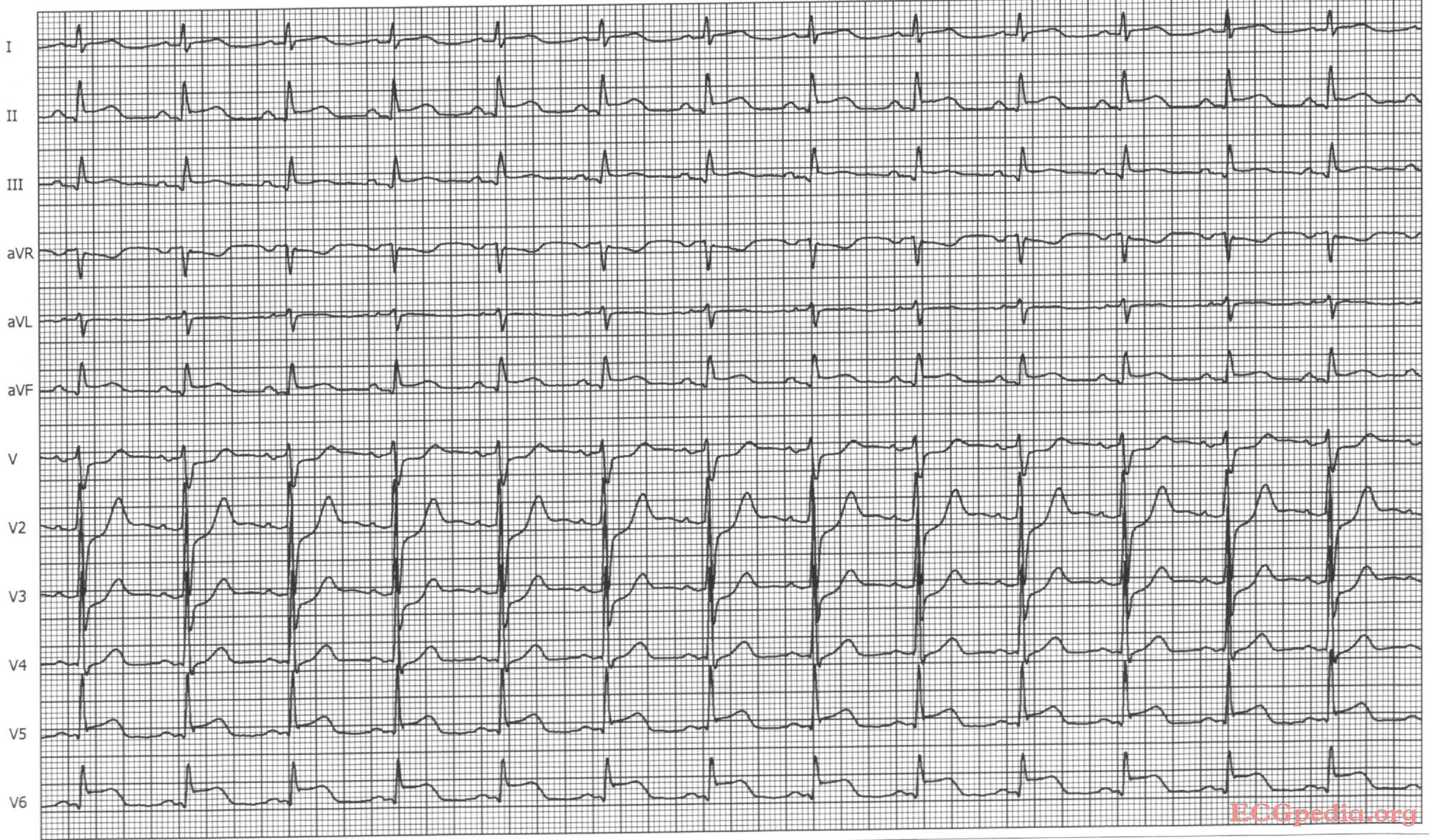
Copyleft image obtained courtesy of, http://en.ecgpedia.org/wiki/Main_Page
Shown below is an EKG with sinus bradycardia with first degree AV block and inferior-posterior-lateral myocardial infarction.

Copyleft image obtained courtesy of, http://en.ecgpedia.org/wiki/Main_Page
Shown below is an EKG depicting sinus bradycardia with inferior-lateral myocardial infarction.

Copyleft image obtained courtesy of, http://en.ecgpedia.org/wiki/Main_Page
Shown below is an EKG illustrating inferior-posterior myocardial infarction with complete AV block and ventricular escape rhythm with RBBB pattern and left axis, followed by sinus rhythm.

Copyleft image obtained courtesy of, http://en.ecgpedia.org/wiki/Main_Page
Shown below is an EKG demonstrating atrial fibrillation and inferior-posterior myocardial infarction.
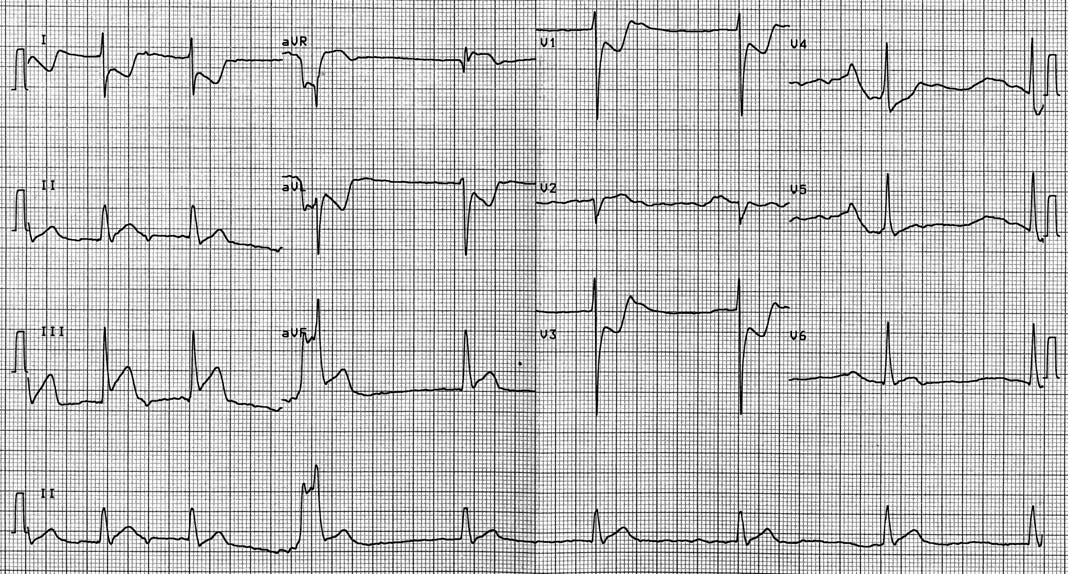
Copyleft image obtained courtesy of, http://en.ecgpedia.org/wiki/Main_Page
Shown below is an EKG demonstrating inferior-posterior-lateral myocardial infarction with a nodal escape rhythm
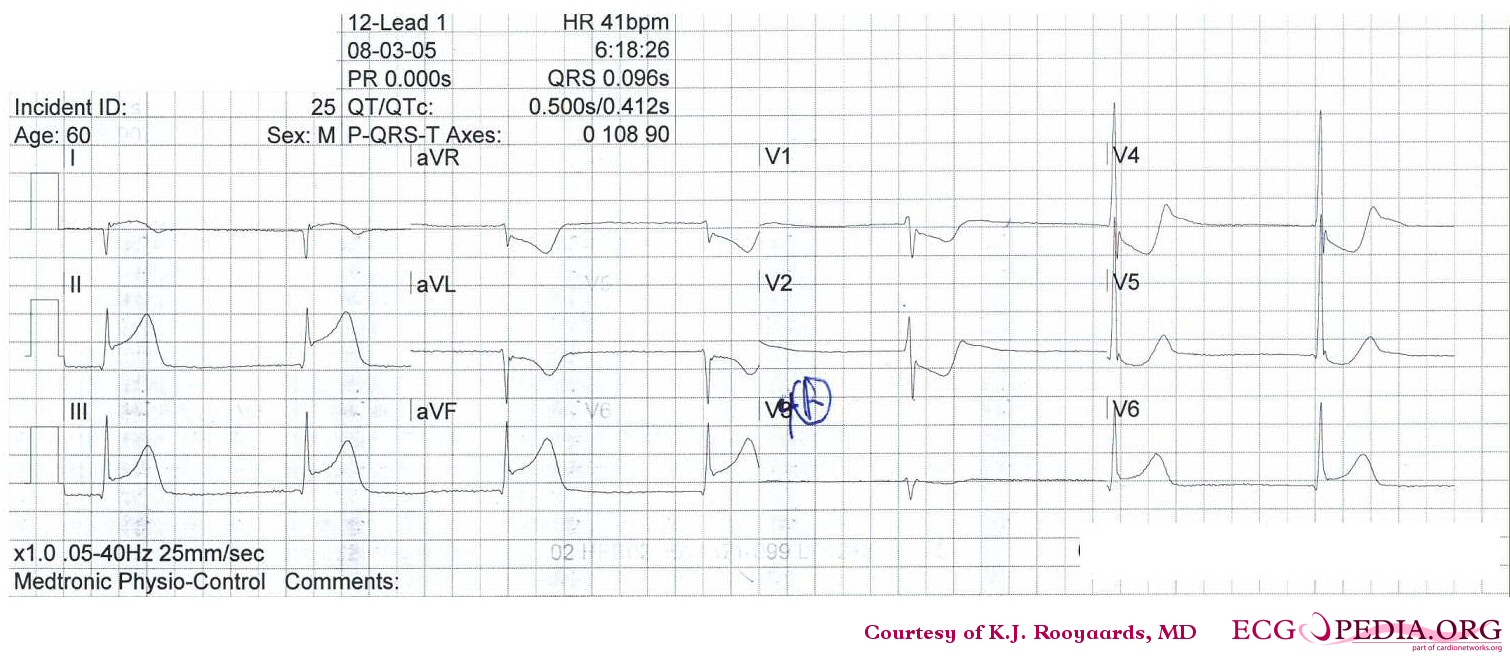
Copyleft image obtained courtesy of, http://en.ecgpedia.org/wiki/Main_Page
Shown below is an EKG demonstrating RBBB and inferior MI. Note to left axis deviation.
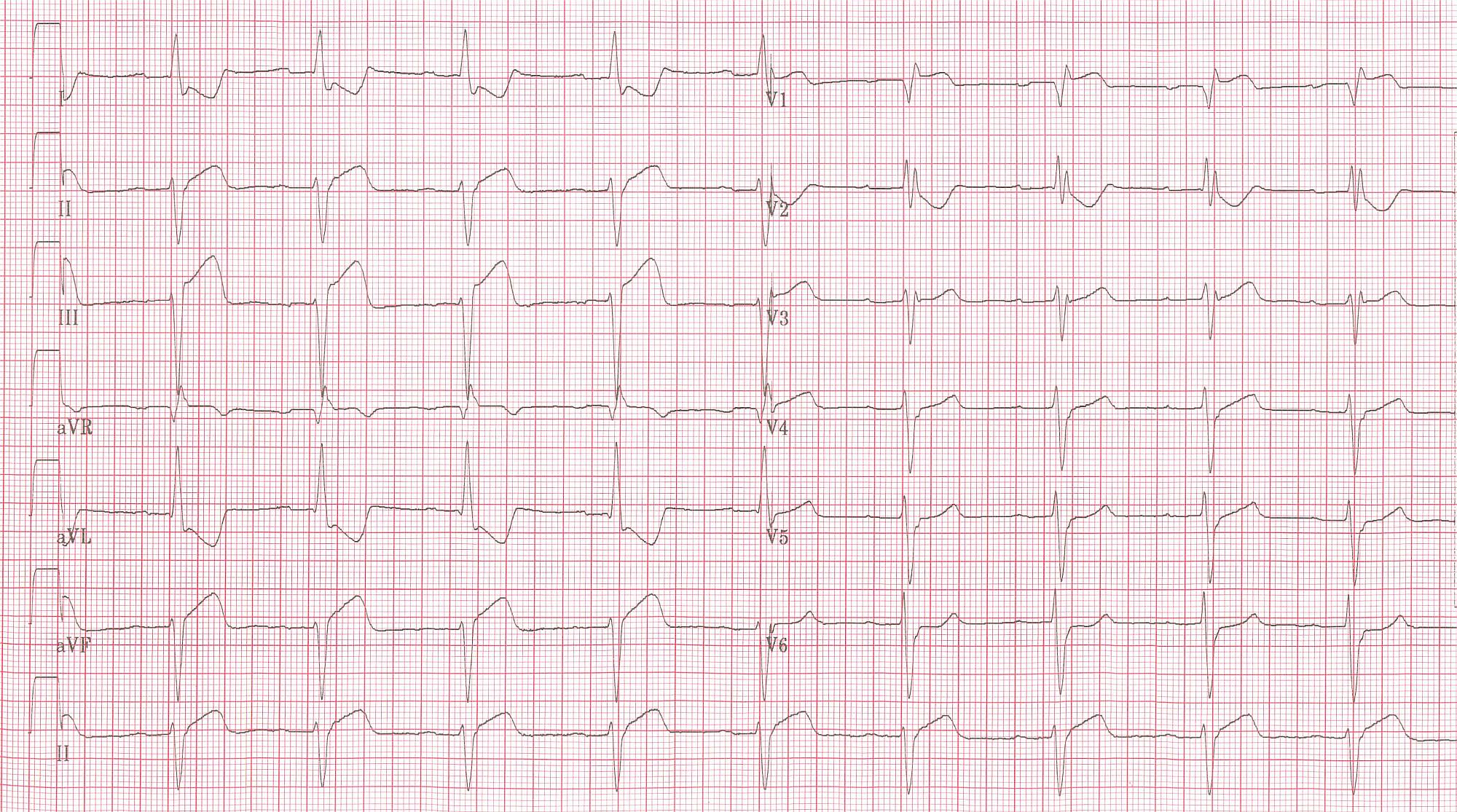
Copyleft image obtained courtesy of, http://en.ecgpedia.org/wiki/Main_Page
Shown below is an EKG demonstrating lead V4R in a patient with RBBB and inferior MI, which clearly shows ST elevation.

Copyleft image obtained courtesy of,http://en.ecgpedia.org/wiki/Main_Page
Shown below is an EKG demonstrating atrial fibrillation with inferior-posterior-lateral myocardial infarction and incomplete right bundle branch block. Lead I shows ST depression, suggestive of right coronary artery involvement.

Copyleft image obtained courtesy of, http://en.ecgpedia.org/wiki/Main_Page
Shown below is an EKG showing ST elevation in inferior leads.
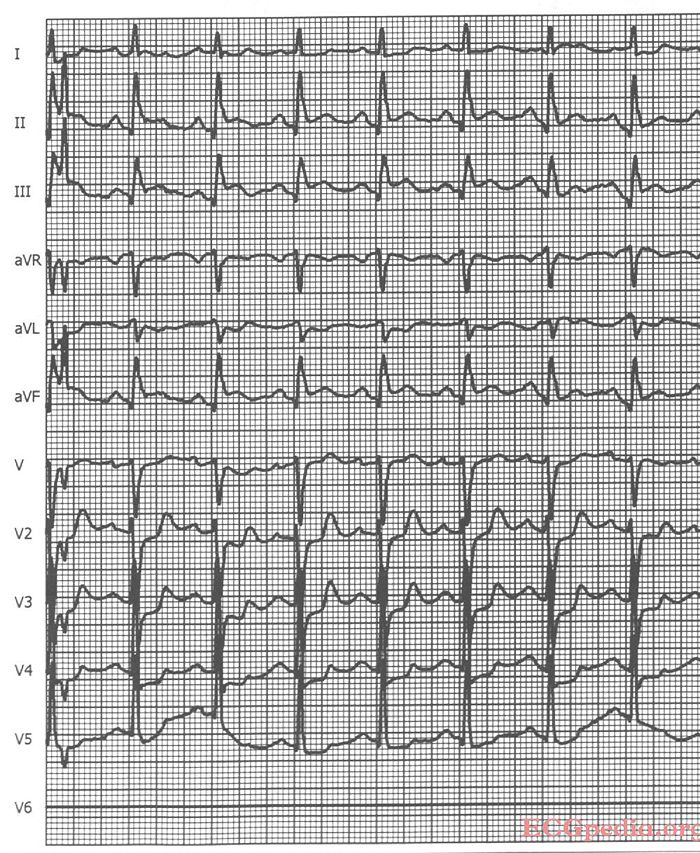
Copyleft image obtained courtesy of, http://en.ecgpedia.org/wiki/File:De-Ami0007.jpg
Shown below is an EKG showing ST elevation MI.
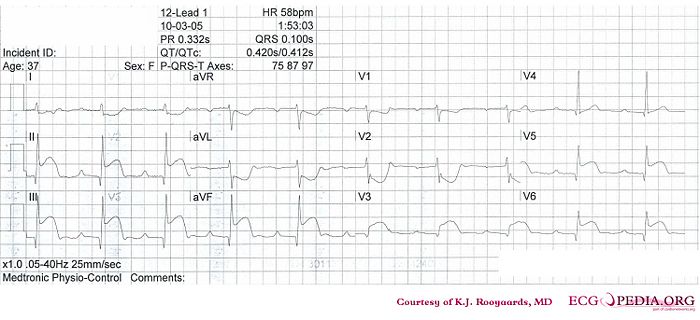
Copyleft image obtained courtesy of, http://en.ecgpedia.org/wiki/File:De-KJcasus13.jpg
Shown below is an EKG showing ST elevation MI.

Copyleft image obtained courtesy of, http://en.ecgpedia.org/wiki/File:De-KJcasus16.jpg
Shown below is an EKG showing ST elevation in inferior leads.
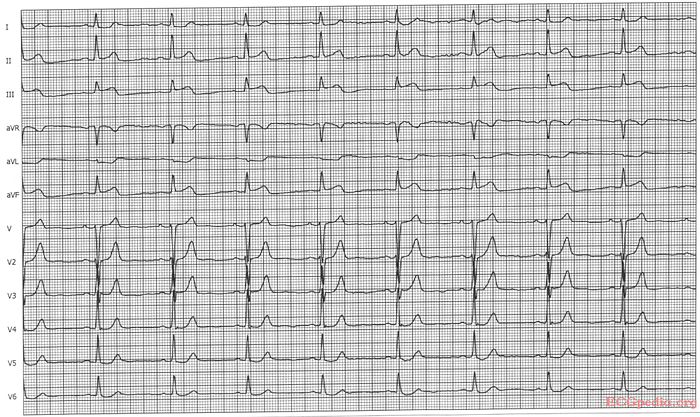
Copyleft image obtained courtesy of, http://en.ecgpedia.org/wiki/File:De-Ami0011.jpg
Shown below is an EKG showing ST elevation MI.

Copyleft image obtained courtesy of, http://en.ecgpedia.org/wiki/File:De-Ami0010.jpg
Shown below is an EKG demonstrating sinus rhythm. The QRS shows Q waves in the inferior leads which are wide (>30ms) and about 25% of the QRS height in aVF. There is also slight ST elevation in the inferior leads and T wave inversion. The EKG suggests an inferior wall infarction, probably old. (the best way to determine "old" is to see a previous cardiogram).

Copyleft image obtained courtesy of, http://en.ecgpedia.org/wiki/Main_Page
Shown below is an EKG demonstrating ST elevation in leads II, III and aVF and ST depression in leads V1, V2 and V3 depicting a posterior MI.
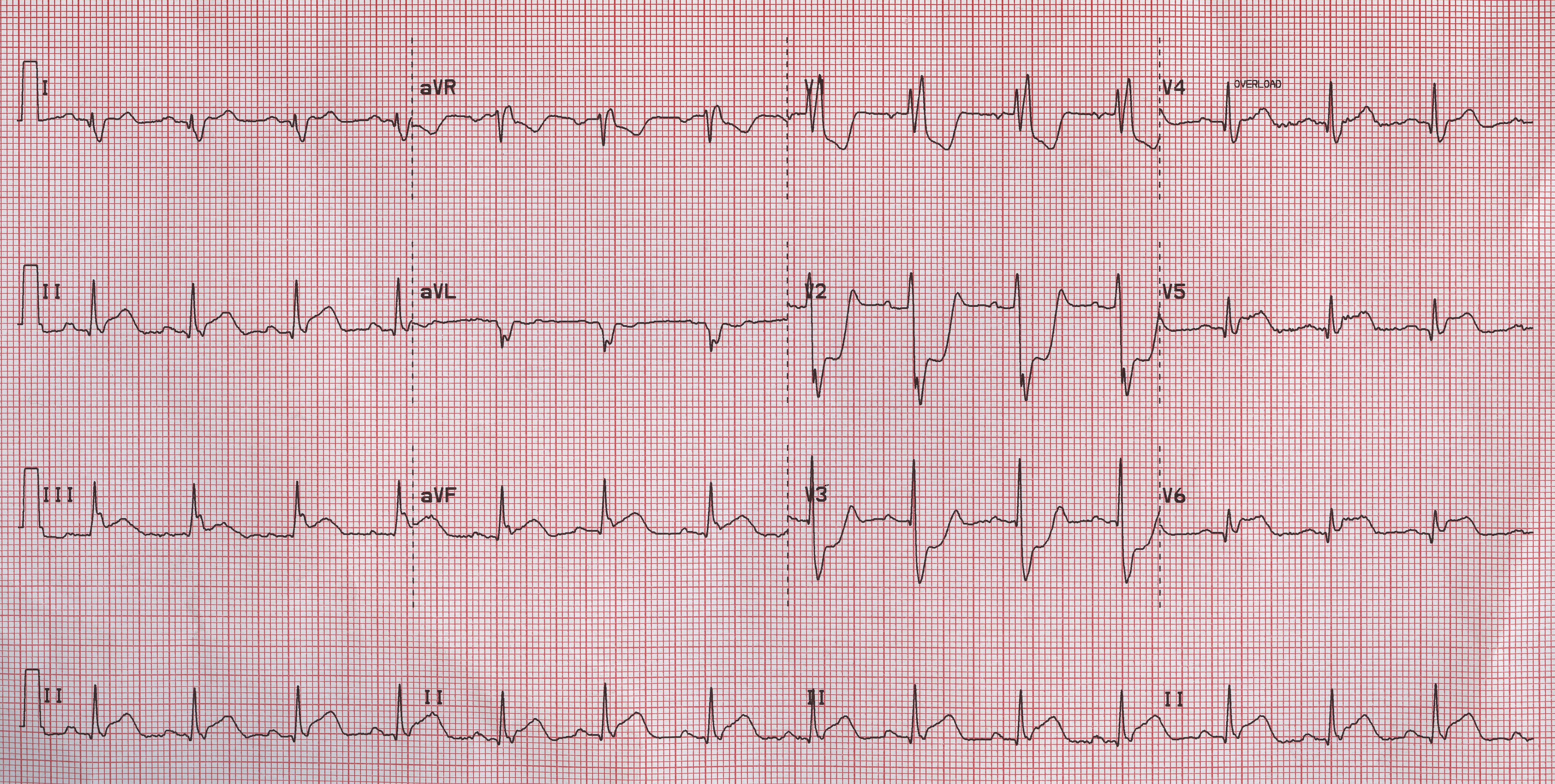
Angiography
Inferior MI results from the total occlusion of either the right coronary artery in 85% of the cases or the left circumflex in 15% of the cases.
Shown below are an animated image and a static image depicting PERFUSE grade 6 thrombus in the RCA. Encircled in yellow in the image on the right is the thrombus area where you can notice an abrupt blunt cut-off appearance beyond which no dye is penetrating the artery.
Shown below are two animated images of the same case depicting TIMI grade 6 thrombus in the left circumflex. The image on the left shows the same thrombus before PCI and the image on the left shows the patent left circumflex after PCI.
